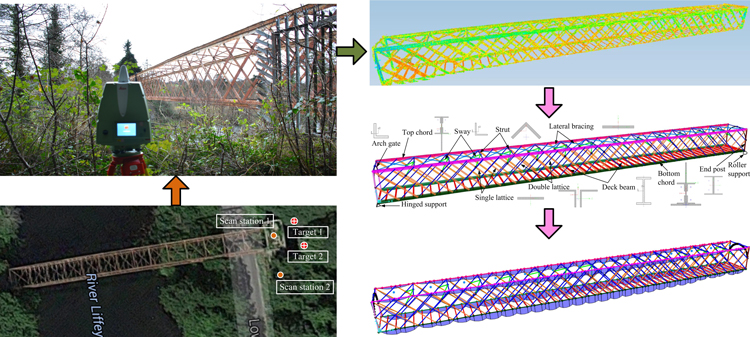News and Events
- Student Awards Evening 2024, sponsored by Winthrop Technologies
- UCD Award Day Ceremony 2024
- Irish Delegation Led by Minister Jack Chambers Attends TRB 2024 in Washington DC
- Dr. Budi Zhao wins Early Career Award from Institute of Civil Engineers
- Dr. Budi Zhao wins 2022 Outstanding Article Award from Geotechnical Testing Journal
- UCD Transport Research Hub podcast launch
- Ripple became the 1st Irish project to receive a New European Bauhaus Award
- International Women in Engineering Day 2023
- iCRAG Impact Award 2023
- Dr. Jennifer Keenahan presents keynote at 18th OpenFOAM Workshop
- ‘Beautiful’ Irish town project shortlisted for prestigious EU prize
- Civil Engineering Awards 2023
- Transport Research Arena Conference 2024 - an introduction
- Assoc. Prof. Mike Long discusses soil characterisation in Ground Engineering
- UCD Student awards 2023
- Dr Sarah Cotterill is an award winner in UCD Research Impact Case Study Competition
- Winthrop Engineering Student Prizes
- College researchers recognised in UCD Research Impact Competition
- Dr Amiya Pandit wins the Thomas Mitchell medal of excellence
- Asia Matters Business Awards 2022
- Congratulations to Robert Corbally - TRA Visions Young Researcher Competition award winner
- Award for Dr. Jennifer Keenahan from the Institute of Civil Engineers (ICE)
- 2022 CERAI Lifetime Achievement Award - Prof. Eugene O'Brien
- Dr. Muhammad Arslan Khan from the School of Civil Engineering (UCD) receiving the Broberg Medal
- Academic Advising in Civil Engineering: Design and Evaluation of a Hybrid Model
- CWRR researcher Dr. Sarah Cotterill wins NovaUCD Award
- Making Building on Sand a Realistic Option
- 2022 News Archive
- 2021 News Archive
- 2020 News Archive
- 2019 News Archive
- Award-winning study provides framework for assessing historic wrought iron structures
- New Perspectives on River Models
- Crampton Award 2019
- Engineering Centenary Celebrations
- UCD School of Civil Engineering Wall of Fame
- UCD host the 5th Pleanary meeting of Skillful March 2019
- An innovative program called TRUSS aims to protect Europe’s infrastructure for decades to come
- Assessing the Internal Health of Earthworks for more Stable Infrastructure
- Eight UCD schools win Athena SWAN awards for gender equality commitment
- Congratulations to Amanda Gibney and Michael Bruen on their fellowships!
- 2018 News Archive
- 2017 News Archive
- Archive
Award-winning study provides framework for assessing historic wrought iron structures
Monday, 29 July, 2019

NYU Professor Debra Laefer’s paper explicated terrestrial laser scanning techniques and modeling that determined the fate of Ireland’s Guinness Bridge
BROOKLYN, New York, Wednesday, July 10, 2019 – The Institution of Civil Engineers will honor the research of a New York University professor who employed terrestrial laser scanning (TLS) to examine Ireland’s historic Guinness Bridge.
The research paper, published in the journal Engineering History and Heritage, garnered the 2019 Manby Prize from the institution, which lauded it for its exceptional quality and benefit to the civil engineering, construction and materials science community. It provided both a case history of a significant structure and a framework for assessing other historic wrought iron bridges using data.
(opens in a new window)Debra Laefer, a professor of civil and urban engineering at NYU Tandon who also serves as a professor of urban informatics and director of citizen science at NYU’s (opens in a new window)Center for Urban Science and Progress (CUSP) and an adjunct professor in University College Dublin’s School of Engineering, chose to examine the structure using TLS, a non-contact method by which researchers can quickly, cost-effectively, and safely acquire three-dimensional (3D) topographic data on the visible surfaces of structural members with millimeter-level accuracy. The data can then be processed to generate a permanent record of a structure’s status or to report structural deficiencies.
Much bridge assessment is conducted by means of visual inspection, which is subjective and highly dependent on an inspector’s experience, particularly in poor weather conditions or when there is limited site access. Access was a particular problem for the Guinness Bridge, which lacks a riverbank on the south side and its north side is largely blocked by a rampant growth of trees. The bridge spans the River Liffey and was built by the famed brewing family in the 19th century to carry hydroelectric power and services to its estate.
TLS is a ground-based version of airborne Light Detection and Ranging (LiDAR); Laefer has been widely celebrated for collecting the world’s (opens in a new window)densest urban LiDAR dataset, which at over 300 points per square meter is more than 30 times denser than typical, capturing above-ground urban geometry at unprecedented detail.
Laefer published the results of her study of the Guinness Bridge in a paper, “Laser Scan-Based Structural Assessment of Wrought Iron Bridges: Guinness Bridge, Ireland,” which she co-authored with Nora Gyetvai and Linh Truong-Hong, her former graduate students at the University College Dublin.
Although it represents an important part of Ireland’s industrial heritage, the Guinness Bridge, which came under state ownership in 1999, had been severely neglected and had been nominated to the World Monument Fund’s “Most at Risk” list in 2012. While the researchers concluded – to the dismay of many in the community – that reopening the bridge for pedestrian traffic was unlikely, they proved that TLS can surpass other common techniques, such as acquiring drone-based images, in certain situations.
“Laser Scan-Based Structural Assessment of Wrought Iron Bridges: Guinness Bridge, Ireland” is available at (opens in a new window)https://doi.org/10.1680/jenhh.17.00018.
Laefer and her coauthors will be presented with the Manby Prize at the ICE Publishing Awards ceremony, scheduled to take place on October 4, 2019 in London.
Press release courtesy of The Tandon School of Engineering
For more information, visit (opens in a new window)http://engineering.nyu.edu.